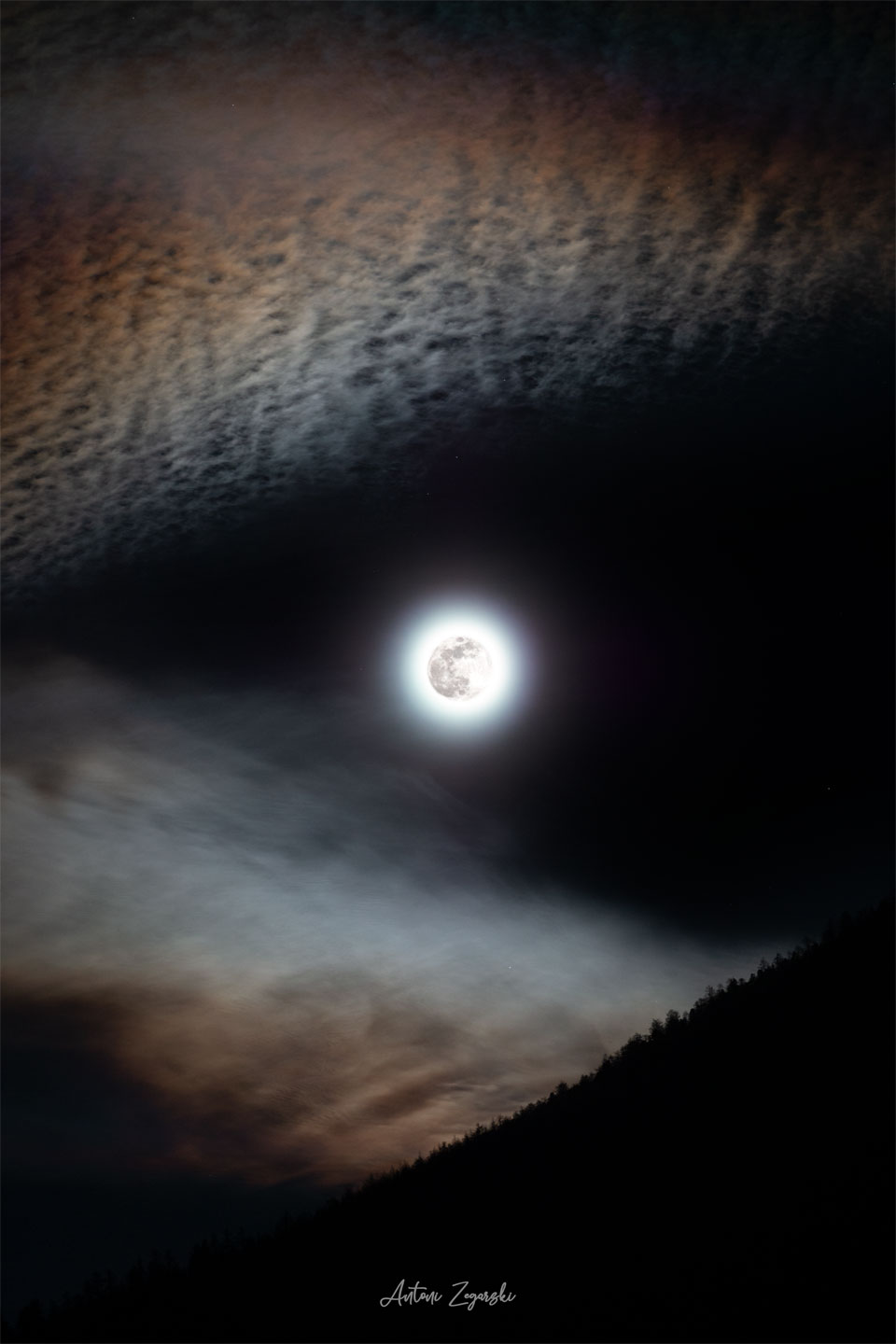2024年2月13日
A January Wolf Moon
Image Credit & Copyright: Antoni Zegarski
Explanation: Did you see the full moon last month? During every month, on average, a full moon occurs in the skies over planet Earth. This is because the Moon takes a month to complete another orbit around our home planet, goes through all of its phases, and once again has its entire Earth-facing half lit by reflected sunlight. Many indigenous cultures give each full moon a name, and this past full moon’s names include the Ice Moon, the Stay at Home Moon, and the Quiet Moon. Occurring in January on the modern western calendar, several cultures have also named the most recent full moon the Wolf Moon, in honor of the famous howling animal. Featured here above the Italian Alps mountains, this past Wolf Moon was captured in combined long and short exposure images. The image is striking because, to some, the surrounding clouds appear as a wolf’s mouth ready to swallow the Wolf Moon, while others see the Moon as a wolf’s eye.
Tomorrow’s picture: a field of roses
一月的狼月
影像提供与版权: Antoni Zegarski
说明: 你有见到上个月的满月吗?平均而言,地球的天空中每个月都会出现一轮满月。这是因为月亮需时一个月才能绕行母行星一圈,经历所有的月相,然后才会重返月亮面对地球的正面只受地球反照的阳光照耀之位相(朔)。许多原住民文化都会为每个满月命名,上个满月有冰月、宅月和静月的称号。 而在现代的阳历里,有些文化称一月的满月为“狼月”,以向这种著名的长嗥动物致敬。这幅于意大利阿尔卑斯山脉、整合长与短曝光照片的主题影像,即呈现了上个月刚过去的狼月。这张影像之所以引人注目,是因为有人认为乍看之下,月亮周围的云层就像将吞噬狼月的狼嘴,而另有人则认为月亮是狼的眼睛。
明日的图片: a field of roses



